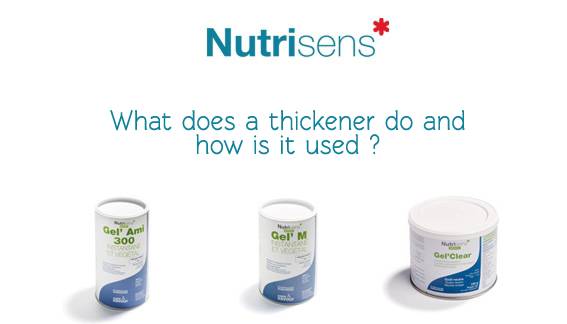
What does a thickener do and how is it used?
Thickeners are food additives.
They increase the viscosity of a liquid preparation and make it smooth.
By improving texture, thickeners can make dishes more appetising and improve their overall quality.
Where do Thickeners come from?
Thickeners have diverse origins:
- Plants: starch, pectin, cellulose, seaweed etc.
- Animal: gelatine.

Most thickeners are of natural origin and are not harmful to health.
They are of great benefit to people who have trouble chewing or swallowing (*see below).
Thicker food is less likely to “go down the wrong way” and is therefore safer for dysphagia patients.
However, excessive consumption may cause side effects such as diarrhoea and bloating. It is therefore important to follow packet instructions.
How to use thickeners?
Some thickeners greatly alter texture and it is important to keep to recommended doses.
In general, these agents are recommended by your GP or specialist depending on the pathology to be treated. The thickener and its use depends on your degree of difficulty in swallowing or chewing and will be subject to change over a period of weeks or months, as your situation evolves.
How to choose a thickener
Several criteria are important to consider when choosing an agent, to ensure you can use it in a wide range of preparations.
- Flavour: neutral is best so that the agent can be added to all sorts of preparations without altering the taste.
- Colour: colourless is best, to avoid changing the appearance of the dish.
- Smell: odourless is best.
- Solubility: choose an agent that will dissolve in both hot and cold dishes.
Composition: for liquid preparations and water, choose an agent containing xanthan gum. These agents are salivary amylase resistant and their texture can help prevent aspiration and choking.